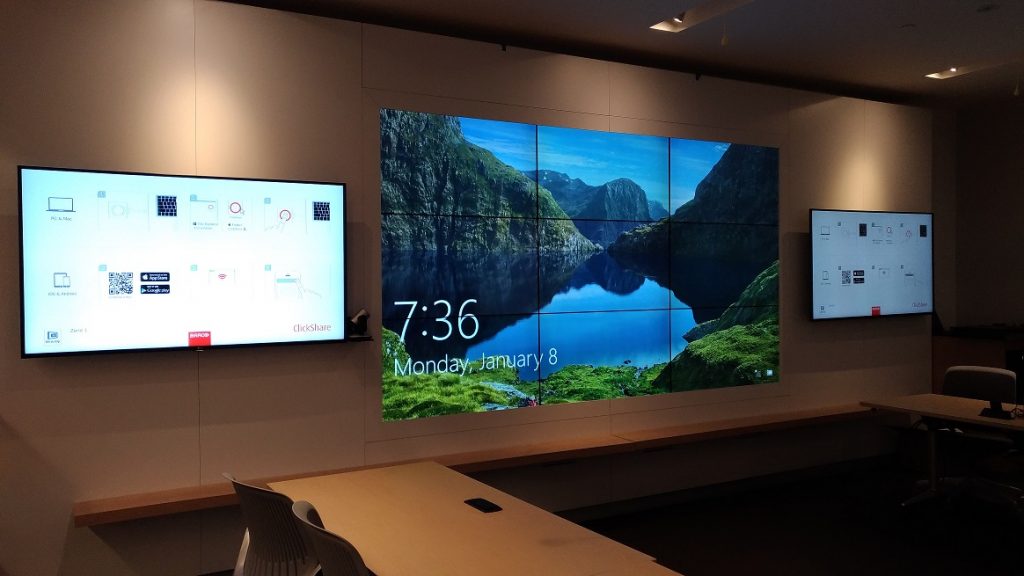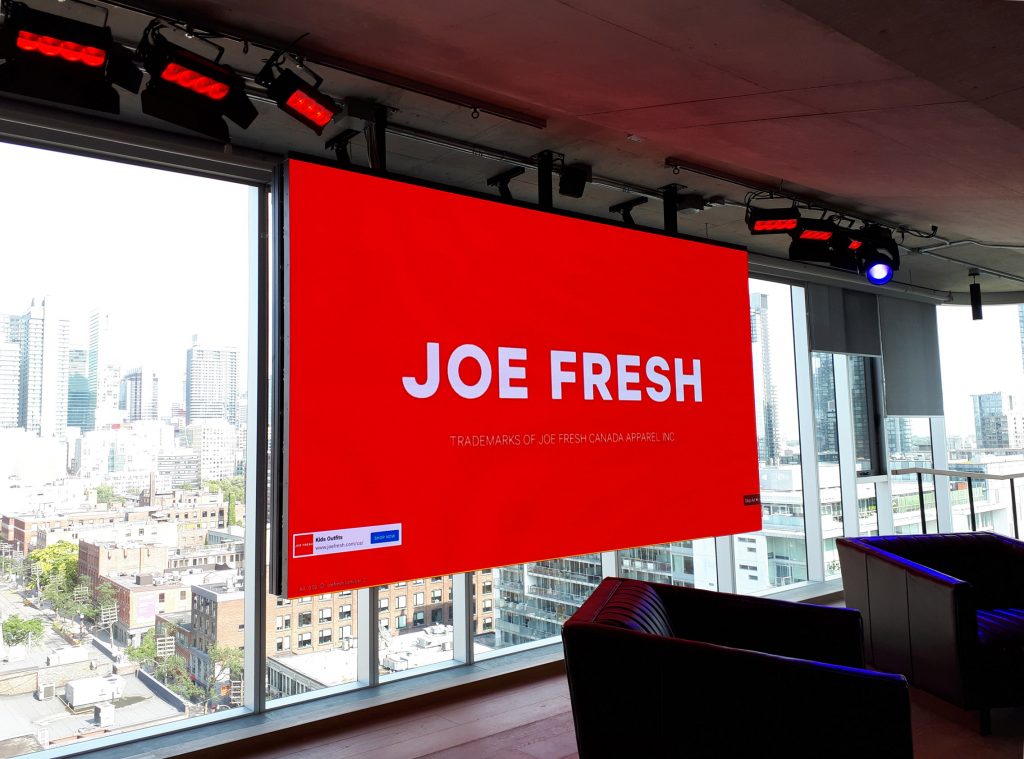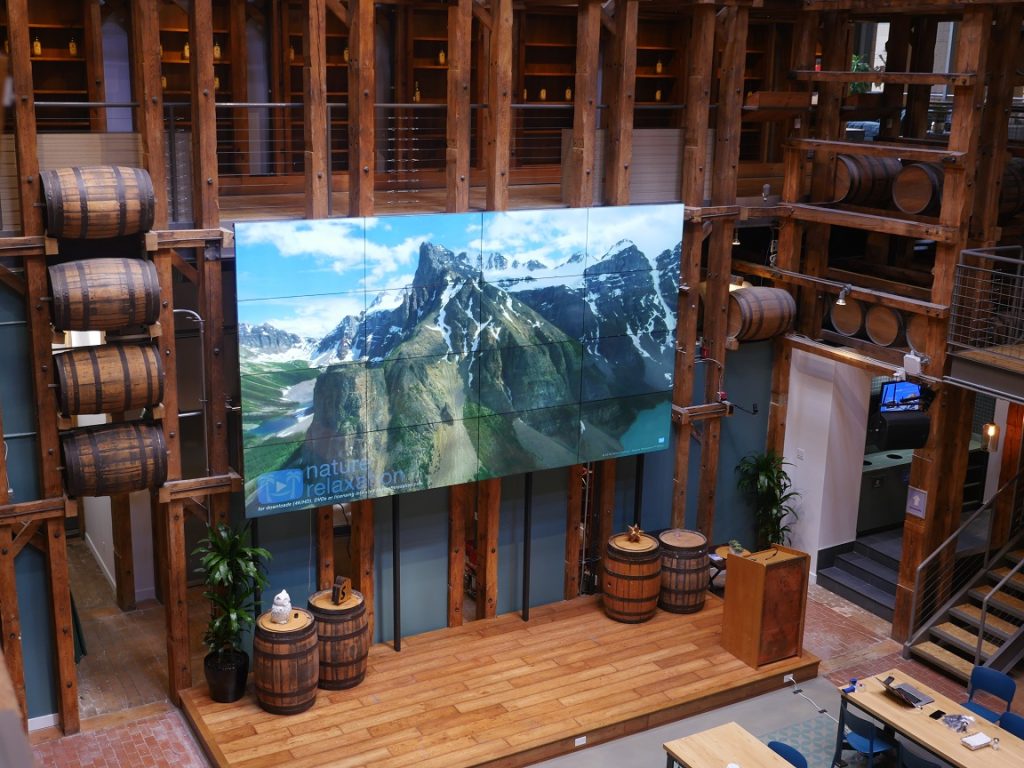Video Walls
IMPRESS YOUR AUDIENCE WITH A VIDEO WALL
Combining multiple displays together to make one, large, cohesive unit, Video Walls are the best solution to engage with your audience be it with digital signage or presentations. Imagine your content from a single source being displayed over tens, even hundreds, of displays! Talk about an attention-grabber! Video Wall technology generally comes in two forms; multiple TV-like LCD displays with ultra-thin bezels or multiple LED panels where hundreds of tiny light emitting diodes are affixed to a panel.
A Video Wall utilizing LCD displays has been the most popular option over recent years. It is also the technology we are accustomed to using daily; from our smartphones to computer monitors to televisions. LCD displays utilize very high-resolution technology that can display text, images and video in considerable detail.
To build these displays into a video wall requires they be “tiled” together, often revealing the bezels between displays. However, recent advances in Video Wall specific LCD displays allow bezels to be as microscopic as 0.44 millimeters in width. Less than a millimeter between displays! These LCD display Video Walls are best suited for up-close viewing with reduced viewing distances. As each display is uniquely manufactured there could be misalignments in colour, brightness, etc. between each display upon installation. This is corrected by calibrating each display to match a predetermined colour specification. Using software and a handheld calibration device, each display can be perfectly matched to provide a perfectly uniform look between each display. This calibration is held within the software of the display itself so recalibration would be required if a display is required to be replaced.
A Video Wall utilizing direct-view LED panels is the most engaging and attractive option for captivating your audience. These panels have hundreds of tiny LED pixels affixed directly to a panel individually emitting coloured light. No liquid crystal or polarized glass is used like with LCD displays. Each pixel can reproduce red, green and blue allowing each individual pixel to display in full colour with ultra-bright intensity. There is no need for the use of bezels with these types of panels so the image blends seamlessly from one panel to the next. The crispness of the image is further enhanced by narrowing the “pixel pitch” which is the distance from the centre of one pixel to the next; as low as 0.7 millimeters!
These LED panel Video Walls are ideal for larger spaces such as very large conference rooms, auditoriums or atriums.
Unlike LCD display Video Walls where each display has unique manufacturing aspects, the components and pixels in a direct-view LED panel Video Wall are all manufactured at the same time and tested for uniformity before the products are installed. These Video Walls are usually calibrated before installation and these calibrations are stored on an external processor. If one of the panels (or even individual pixels!) on the LED Video Wall need to be replaced no further calibration is required if replacement panels and pixels were purchased (and more importantly manufactured) alongside the main LED Video Wall.
TYPICAL VIDEO WALL EQUIPMENT
LCD Display Video Wall
- Multiple TV-like LCD displays “tiled” together.
- Capable of reproducing very-high resolution and highly detailed content.
- Bezels are present between displays however could be less than one millimeter in width.
- Requires calibration post-installation.Calibration is uniquely stored on each display requiring re-calibration for replacement displays.
Direct-View LED Video Wall
- Hundreds of tiny pixels mounted directly to a panel.
- No polarized glass on front of image.
- Each pixel can be individually controlled and calibrated for optimum colour and brightness.
- Detail of the content is dictated by the pixel pitch (distance from the centre of one pixel to the next) which could be less than one millimeter.
- Calibration is usually completed prior to installation.
- Calibration is stored on an external processor so further calibration is generally not required if replacement panels and pixels were included in the original order.






